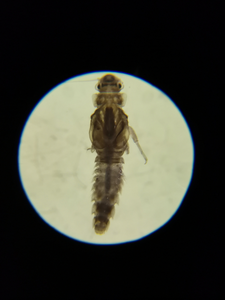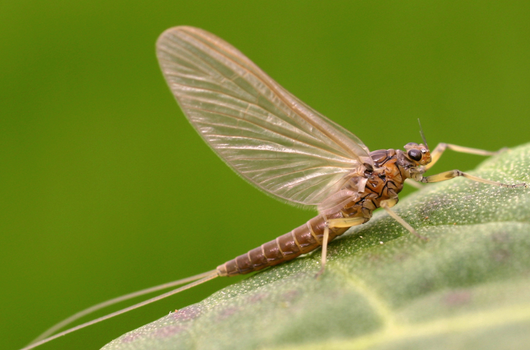River Thames Scheme makes rare discovery
The River Thames Scheme (RTS) has discovered a nationally rare mayfly (Caenis beskidensis), which hadn't been spotted in the UK for 49 years and has never been seen in the River Thames.
 The invertebrate, which was last seen in Herefordshire in 1973, was discovered near Walton Bridge as part of the project's routine survey work. Historically, they have been found in small and medium-sized streams.
The invertebrate, which was last seen in Herefordshire in 1973, was discovered near Walton Bridge as part of the project's routine survey work. Historically, they have been found in small and medium-sized streams.
This is an incredibly exciting find for the scheme and demonstrates just how important the survey work that the scheme's ecologists do is. By establishing the value of the existing habitats living around the Thames the scheme will be able to put plans in place to protect them during the work and help them thrive for the future.
Speaking on the discovery RTS ecologist Jenny Stephenson said: "It is such an exciting discovery to identify something that hasn't been seen in British water since the 1970's. Now that we have discovered the Caenis beskidensis in the River Thames we will be able to monitor it and ensure the colony continues to thrive.
"The discovery of the mayfly, which was found in its nymph stage and part of its aquatic life cycle, represents a major expansion in both the distribution and habitat type the species has historically inhabited. We are confident that with the new habitats that the scheme will create we will encourage these may flies to breed further in the future."
Mayflies form an important part of the river eco-system and are an important food source for fish and, once transformed into its adult form, insectivorous birds. Although the may flies have historically been found in small and medium sized streams they are also found in the upper areas of lowland rivers where they live in slow flowing shallow water. The RTS will create more of these river habitats so the team are hopeful new colonies will thrive.
As part of its work to understand the existing environment the RTS carries out hundreds of ecological and environmental surveys every year. A range of species have been targeted in these surveys, including bats (and their roosts), water voles, breeding birds, great crested newts, fish, invertebrates and species of reptiles.
Hannah Packwood, RTS environmental surveys project manager said: "It's so important that we understand the existing environment so we can continue to protect and where possible enhance it through the RTS. Finding rare and unexpected species is exciting, and we will continue to monitor the environment in our survey work throughout construction and the operation of the scheme".
A team of ecologists undertake the surveys by observing, measuring, taking notes and photographs, as well as soil and water samples. These surveys don't cause any significant disturbance to the environment or to land or property.

Image of a generic mayfly in its adult form. (Please note this is not Caenis beskidensis as due to its rarity no image is available).
